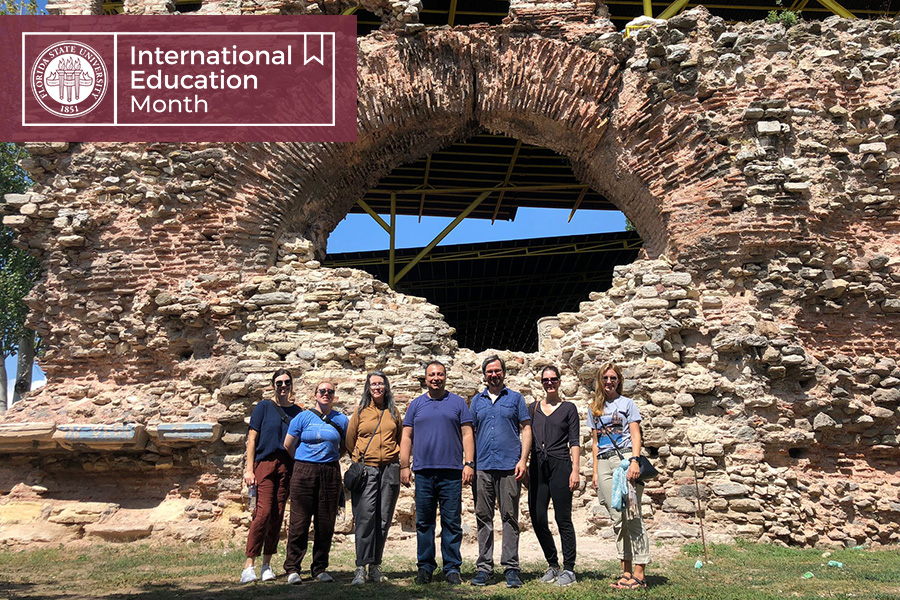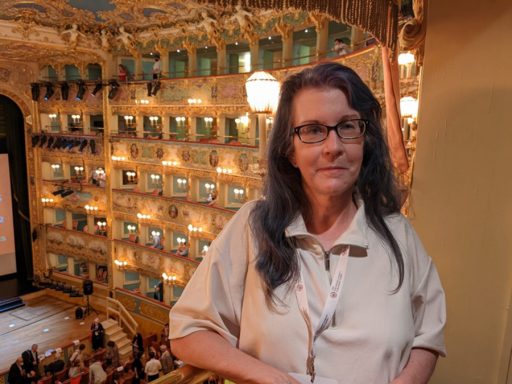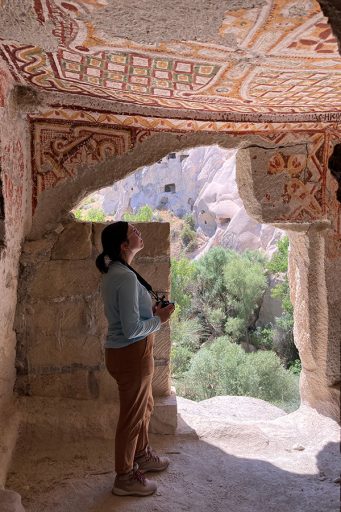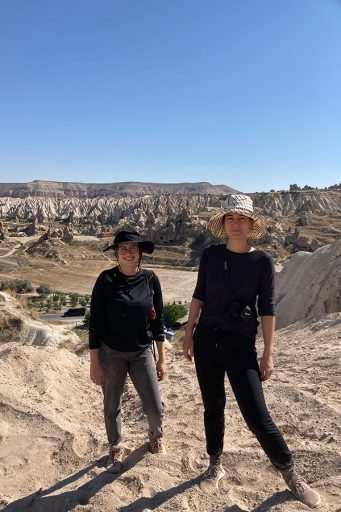

Türkiye is home to more than 600 churches carved directly out of rock and volcanic ash. These places of worship, located in the mountainous Cappadocia region, are remnants of a once-flourishing Byzantine Empire.
A Florida State University professor and her graduate students traveled to Türkiye in August to establish records of the churches before the sites succumb to natural forces.
Lynn Jones, an associate professor of art history, and her students traversed streams and climbed rocks to scour cliffsides for glimmers of potential sites. Photographing the churches aids their research and provides records for future researchers.
“When you’re doing Byzantine art history, you can’t go back to Byzantium. There is no Byzantium to go to. To contextualize these paintings, you must experience them in these spaces. You must let the spaces speak to you. You must put yourself in the role of the faithful in the 10th century. And the more of these pieces you layer together, the clearer the picture becomes.”
— Lynn Jones, associate professor of art history
“These churches are not easily found,” Jones said. “It can take years to locate some of them. This is an incredibly remote region the size of Texas and reaching some of these sites involves facing a wide variety of in-field difficulties.”

Like her students, Jones visited Türkiye during graduate school. Exploring the new country alone, in her words, led her to visit “all of the wrong places” and photograph “all of the wrong things.”
Now as a professor, Jones vows to give her graduate students the tools and guidance they need for field success.
Before they began their fieldwork in Cappadocia, team members visited Türkiye’s biggest city, Istanbul, to experience the local museums and cultural sites such as the Hagia Sophia. Students said visits to active archeological sites at the harbor of the Palace of Boukoleon and the Golden Gate, the city’s Byzantine imperial ceremonial entrance, fostered important connections with international colleagues.
Madison Gilmore-Duffey, a second-year Ph.D. student who began working with Jones in 2019, emphasized the value of the trip.
“Traveling throughout Türkiye allowed us to get a better understanding of the breadth of the Byzantine Empire,” she said. “This experience highlighted the diversity in culture, landscape and economics of the empire. Visiting the physical space made the history of the empire come alive.”
Doctoral candidate Sarah Mathiesen said the trip gave her close observation of her dissertation subject, Yılanlı Kilise, the “Church of the Snakes,” in the Ihlara Valley of southwestern Cappadocia.

“While technology is helpful in giving an idea of the rock-cut churches, it’s important to get out in the field and visit in person,” Mathiesen said. “In the case of Yılanlı, no one has produced a full plan of its decorative program. I found several parts of the program that haven’t been photographed or discussed anywhere before — like the remnants of a lion.”
Lorenzo Pericolo, chair of the Department of Art History, can attest to Jones’ commitment to the research and documentation of the Byzantine-era churches.
“This fieldwork is a testament to Dr. Jones’ acumen in investigating the Byzantine civilization in all its complexity and paving the way to advanced research in her area,” Pericolo said. “It above all demonstrates the outstanding quality of our Ph.D. students, of whom the entire faculty is so utterly proud.”
Jones emphasizes the significance of fieldwork for art history students. The space in which the art abides can express more than the art itself.
“When you’re doing Byzantine art history, you can’t go back to Byzantium. There is no Byzantium to go to,” Jones said. “To contextualize these paintings, you must experience them in these spaces. You must let the spaces speak to you. You must put yourself in the role of the faithful in the 10th century. And the more of these pieces you layer together, the clearer the picture becomes.”
Immediately following this year’s fieldwork in Türkiye, Jones and four students presented papers at the International Congress of Byzantine Studies in Venice, Italy. The Congress, held every five years, is the world’s largest scholarly event devoted to the history, art and culture of the Byzantine Empire.
Jones is working on a book regarding depictions of Constantine in Türkiye’s rock-cut churches, anticipated to be published in 2024. She plans on returning to Türkiye, and to Cappadocia, in 2023.
For more information, visit arthistory.fsu.edu.




